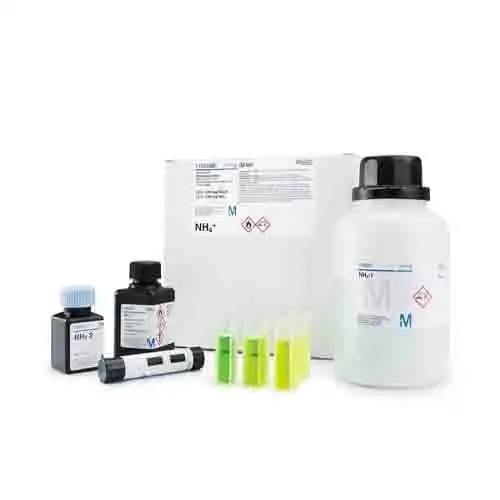
Cyanide Test, Merck
Login to see pricesBrand:
Merck
The method corresponds to DIN 38405-13 and is analogous to ISO 6703, EPA 335.2, APHA 4500-CN- E, and ASTM D2036-09 D.
This Spectroquant® Cyanide Reagent Test allows the accurate quantification of the free and readily liberated cyanide content in aqueous samples.
Method applied: Cyanide ions react with a chlorinating agent to form cyanogen chloride. In a follow-up reaction with 1,3-dimethylbarbituric acid in the presence of pyridine a violet dye (König reaction) is formed which is determined photometrically (only free cyanide. For readily liberated cyanide samples must be decomposed by digestion).
The Spectroquant® Reagent Test Kits contain highly stable, ready-to-use reagent mixtures to perform the analysis according to the procedure described in the accompanying instruction leaflet.
All our Cell and Reagent Test Kits are equipped with the unique Live ID which allows seamless method recognition and contains essential information such as lot number, expiry date, and automatic calibration updates.
TLC Silica gel 60 F₂₅₄, (20×20 cm) – Merck
Login to see pricesBrand:
Merck
Description
For thin-layer chromatography applications, we offer Aluminum TLC plates that are coated with silica gel containing a fluorescent indicator F254. These silica gel TLC plates are available in a set of 25 and measure 20x20cm. Our classical silica TLC plates are created by combining our established silica gel 60 with a unique polymeric binder. This combination produces a very adherent and robust surface that will not crack or blister and can even withstand writing with a pencil without risking damage to the layer.

Digitonin, High Purity – CAS 11024-24-1 – Calbiochem (Merck)
Login to see pricesBrand:
Merck
**This product is not currently sold in Malaysia, please contact us for more information
Description:
CAS Number : 11024-24-1
Empirical formula : C56H92O29
A non-ionic detergent commonly used to solubilize membrane-bound proteins.
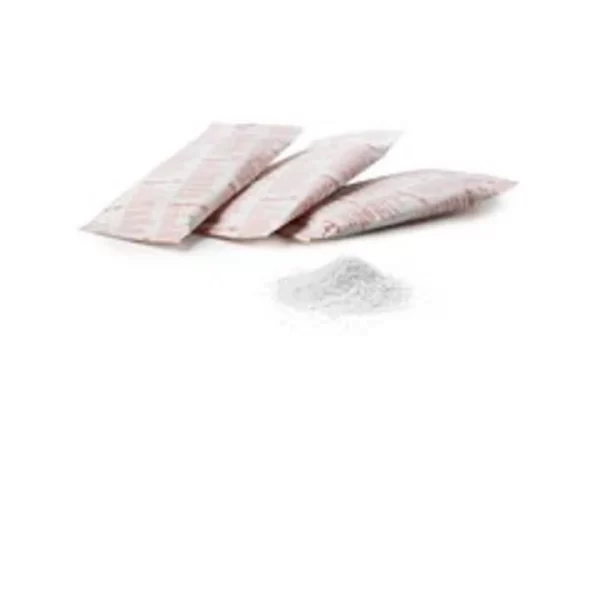
EXtrelut® NT Refill pack for column fillings EXtrelut® NT 20 (Merck)
Login to see pricesBrand:
Merck
Description:
CAS Number : 68855-54-9
Extrelut® NT simplifies liquid-liquid extraction in its most effective form by using a chemically inert, wide-pore and highly pure diatomaceous earth based solid phase. Depending on the sample volume three types of columns are available: Extrelut® NT1 can take up a maximum of one ml, Extrelut® NT3 three ml and Extrelut® NT20 up to twenty ml of sample.
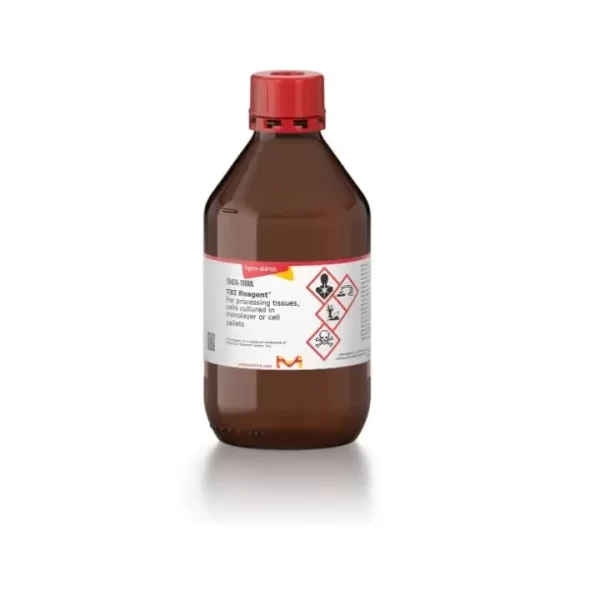
TRI Reagent® for processing tissues, cells cultured in monolayer or cell pellets (Sigma-Aldrich)
Login to see pricesBrand:
Sigma
Description:
Synonyms : DNA/RNA/protein extraction reagent, DNA/RNA/protein isolation reagent, DNA/RNA/protein purification reagent, TRI Reagent® cell pellet solution, cell pellet RNA extraction, cell pellet RNA isolation, cell pellet RNA purification, single step RNA extraction reagent, single step RNA isolation reagent, single step RNA purification reagent, total RNA extraction solution, total RNA isolation solution, total RNA purification solution, TRI Reagent® RNA Isolation Reagent.
TRI reagent® is a quick and convenient ready-to-use reagent useful for efficient total RNA extraction or for the simultaneous isolation of RNA, DNA and protein. TRI reagent® is a mixture of guanidine thiocyanate and phenol in a monophasic solution.
Homogenization or lysis of the tissue sample in TRI reagent® dissolves RNA, DNA and protein. The addition of chloroform or 1-bromo-3-chloropropane followed by centrifugation results in the separation of the mixture into three phases: an aqueous phase containing the RNA, the interphase containing DNA, and an organic phase containing proteins. Each of the components can then be isolated after separating the phases.
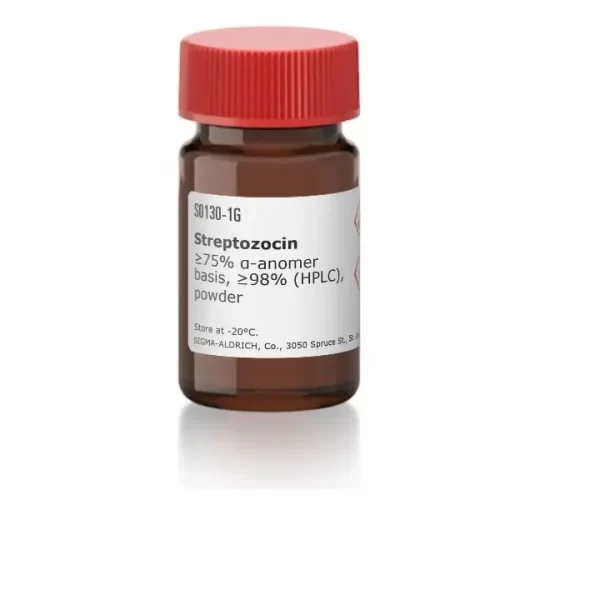
Streptozocin ≥75% α-anomer basis, ≥98% (HPLC) (Sigma-Aldrich)
Login to see pricesBrand:
Sigma
Description:
CAS Number : 18883-66-4
Molecular weight : 265.22 g/mol
Empirical formula : C8H15N3O7
Synonyms : N-(Methylnitrosocarbamoyl)-α-D-glucosamine, Streptozotocin
Streptozocin or streptozotocin, is obtained from Streptomyces achromogenes.[1] Streptozotocin, a glucosamine-nitrosourea, is a DNA alkylating agent that enters cells exclusively via the GLUT2 glucose transport protein. Streptozocin, a diabetagen, is especially toxic to pancreatic islet insulin-producing β-cells. It is toxic to GLUT2 positive neuroendocrine tumor cells.
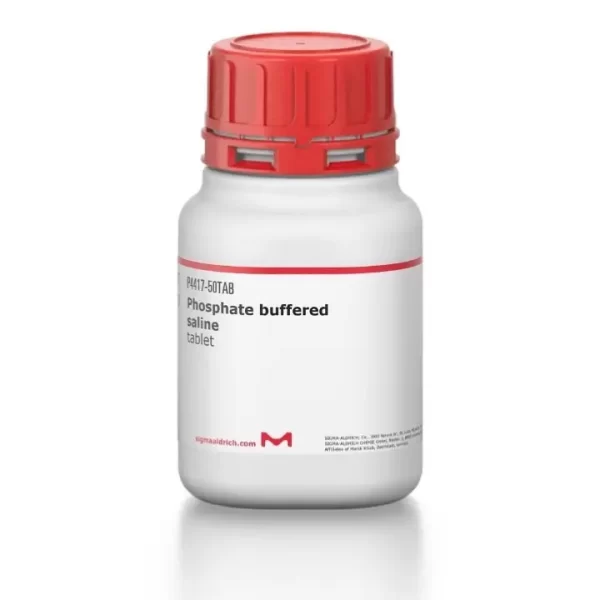
Phosphate buffered saline (Sigma-Aldrich)
Login to see pricesBrand:
Sigma
Description
CAS Number : 24867-26-3
Phosphate-buffered saline (PBS) is a buffer solution used in biological research. It is a water-based salt solution containing sodium phosphate, sodium chloride and, in some formulations, it contains potassium chloride and potassium phosphate. The osmolality and ion concentrations of the solutions match those of the human body (isotonic) and are non-toxic to most cells.
Application :
- For the production of platinum nanoparticles (NP-Pt) hydrocolloids
- For the washing of blood sample and SEM (scanning electron microscope) stubs prior to SEM
- For preparing the solution of fluorescent lectin wheat germ agglutinin (WGA)
- For the dilution of capture antibody during ELISA (enzyme linked immunosorbent assay)
- For suspension of cell pellets during centrifugation
- In immunoassay procedures.
One tablet dissolved in 200 mL of deionized water yields 0.01 M phosphate buffer, 0.0027 M potassium chloride and 0.137 M sodium chloride, pH 7.4, at 25 °C.

Minoxidil Related Compound E United States Pharmacopeia (USP) Reference Standard (Sigma-Aldrich)
Login to see pricesBrand:
Sigma
Description
CAS Number : 24867-26-3
Concentration : 10,000 × in DMSO
These products are for test and assay use only. They are not meant for administration to humans or animals and cannot be used to diagnose, treat, or cure diseases of any kind.
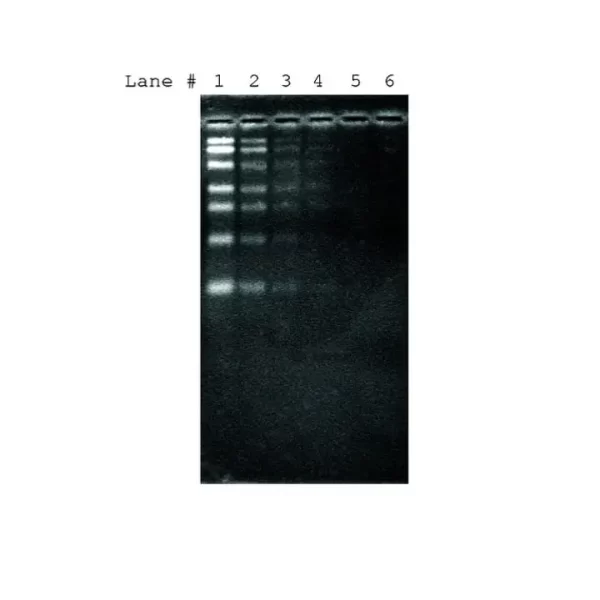
SYBR® Green II RNA gel stain, 10,000 × in DMSO (Sigma-Aldrich)
Login to see pricesBrand:
Sigma
Description
CAS Number : 172827-25-7
Concentration : 10,000 × in DMSO
Usage : mL sufficient for 100 mini-gels
Synonyms : RNA gel dye, SYBR® RNA dye, safer gel stain
SYBR® Green II is a highly sensitive stain for post electrophoresis staining of RNA and ssDNA in agarose or polyacrylamide gels. SYBR® Green II is not selective for RNA staining but does exhibit a higher quantum yield when bound to RNA than to double stranded DNA.
Application :
-for the quantification of ribonucleic acid (RNA) in Escherichia coli[1]
-for staining 5′-ETS rRNA species separated on polyacrylamide gel prior to Northern blot analysis[2]
-to stain formaldehyde agarose gels to visualize RNA bands[3]
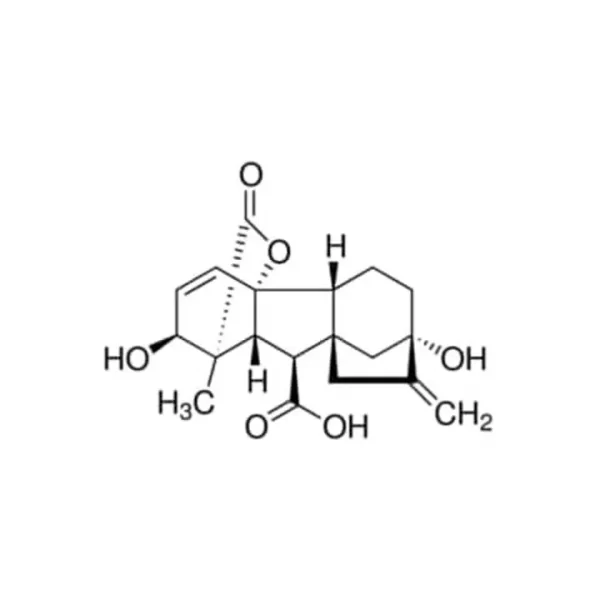
Gibberellin 80% gibberellin A3 basis (TLC) (Sigma-Aldrich)
Login to see pricesBrand:
Sigma
Description
Formula : C19H22O6
Molecular weight : 346.37 g/mol
Synonym : GA3
A “classical” ubiquitous plant hormone, with diverse effects, such as stilumating stem and root growth, and stimulating seed germination.
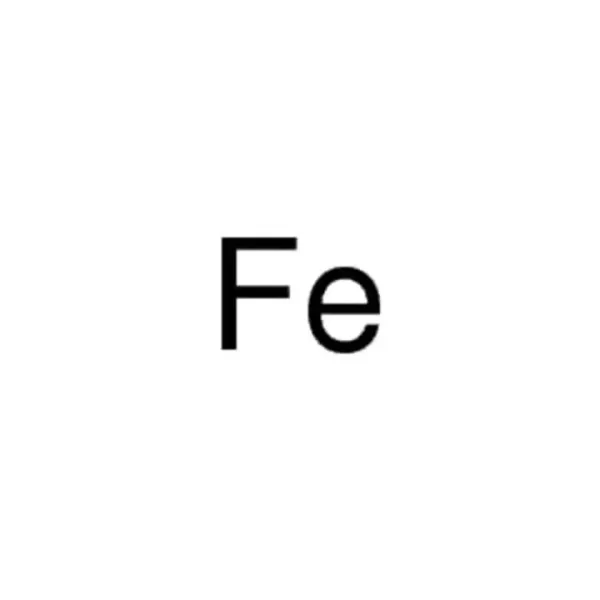
Iron puriss. p.a., carbonyl-Iron powder, low in magnesium and manganese compounds, ≥99.5% (RT)-Sigma-Aldrich
Login to see pricesBrand:
Sigma
Description
Cas Number :7439-89-6
Molecular mass :55.85 g/mol
Chemical formula : Fe
Synonyms : Fe
Iron (carbonyl) powder has been used:
In the preparation of copper on iron (Cu/Fe) bimetallic catalytic system to synthesize β-aminoenones and 3,5-disubstituted pyrazoles.[1]
As the main component of magnetorheological fluids.[2][3]
To produce Fe-B-C composites from boron carbide using plasma sintering.[4]
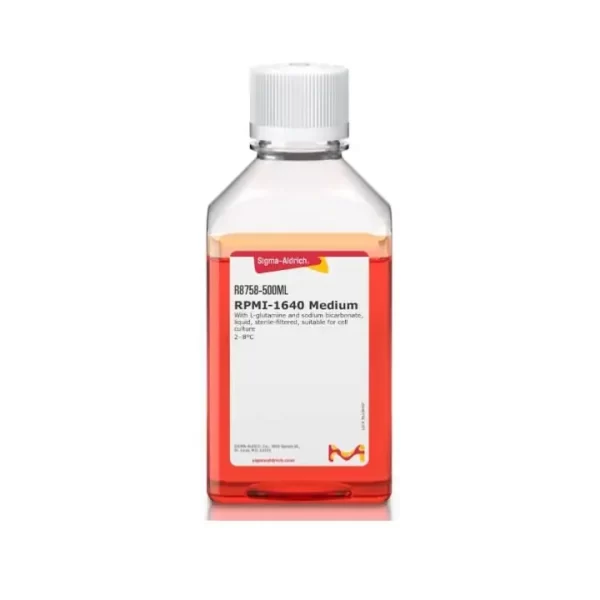
RPMI-1640 Medium-Sigma Aldrich
Login to see pricesBrand:
Sigma
Description
pH : > 7.2
Components :
HEPES: 20 mM
NaHCO3: no
sodium pyruvate: no
phenol red: yes
L-glutamine: yes
RPMI 1640 Medium was developed at Roswell Park Memorial Institute in 1966 by Moore and his co-workers. A modification of McCoy′s 5A Medium, it was formulated to support lymphoblastoid cells in suspension culture, but it has since been shown to support a wide variety of cells that are anchorage-dependent. Originally intended to be used with a serum supplement, RPMI 1640 has been shown to support several cell lines in the absence of serum. It has also been widely used in fusion protocols and in the growth of hybrid cells. This medium is suitable for culturing human normal and neoplastic leukocytes.
RPMI-1640 medium formulation is based on the RPMI-1630 series of media utilizing a bicarbonate buffering system and alterations in the amounts of amino acids and vitamins. It is used for the culture of human normal and neoplastic leukocytes. RPMI-1640 also supports the growth of various types of cell cultures, like fresh human lymphocytes in the 72-hour phytohemagglutinin (PHA) stimulation assay.
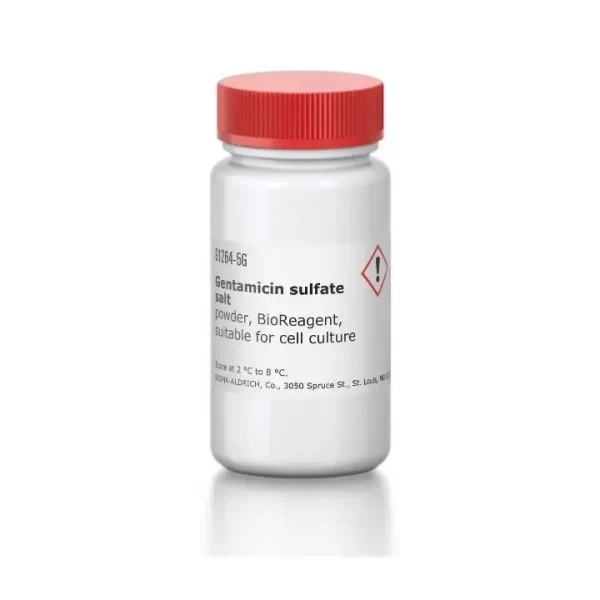
Gentamicin sulfate salt – Sigma-Aldrich
Login to see pricesBrand:
Sigma
Description
Cas Number : 1045-41-0
Synonyms : Gentiomycin C
Chemical structure: aminoglycoside
Gentamicin, also known as gentiomycin C, is an aminoglycoside, which is naturally produced by Gram-negative bacteria. This antibiotic functions by preventing protein synthesis.[1] Gentamicin sulfate prevents the growth of both Gram positive and Gram negative bacteria, in vivo and in vitro. In tissue culture, gentamicin sulfate is used to inhibit the growth of various strains of mycoplasma.[2].

CombiTitrant 5 , 1L (Merck)
Login to see pricesBrand:
Merck
Description
CAS Number : 7553-56-2
Density : 1.19 g/cm3 (20 °C)
One-component reagent for volumetric Karl Fischer titration 1 ml ≙ ca. 5 mg H₂O Aquastar®

Hydroxynaphthol blue metal (pM) indicator (Merck)
Login to see pricesBrand:
Merck
Description
Cas Number : 63451-35-4
Molar mass : 620.47 g/mol
Chemical formula : : : C₂₀H₁₁N₂Na₃O₁₁S₃
Synonyms : 2,2′-Dihydroxy-1,1′-azonaphthalene-3′,4,6′-trisulfonic acidtrisodiumsalt.

Silica gel 60 (0.063-0.200 mm) for column chromatography (70-230 mesh ASTM)-Merck
Login to see pricesBrand:
Merck
Description
Cas Number : 7631-86-9
Molecular mass : 60.08 g/mol
Chemical formula : SiO₂
Silica gel 60 (0.063-0.200 mm) for column chromatography (70-230 mesh ASTM). CAS No. 7631-86-9, EC Number 231-545-4.
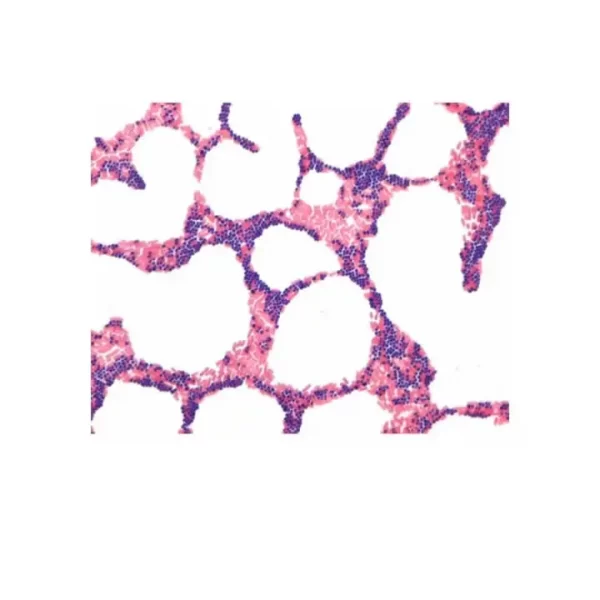
Gram-Color Stain set for the Gram staining method-Merck
Login to see pricesBrand:
Merck
Description
Gram-Color – stain set for the Gram staining method, is used for human-medical cell diagnosis and serves the purpose of the bacteriological investigation of sample material of human origin, for example smears of body fluids. The Gram-Color solutions are modified and designed in such a way that staining can be carried out in staining cells, on the staining rack, and also in automated staining systems. Gram-color modified, phenol-free is a staining set for staining microorganisms. Aniline dyes in the cell tissue of microorganisms form a red dye-iodine complex when exposed to iodine. Sodium hydrogen carbonate enhances the formation of this complex further still. In gram-positive microorganisms the dye-iodine complex cannot be subsequently dissolved from the cells by decolorizing agents such as alcohol or acetone. The cell remains dark blue in color. In gram-negative microorganisms the dye-iodine complex is dissolved and the cell turns red as a result of counterstaining with fuchsin. Gram-color modified, phenol-free is an IVD / CE product.
The package is sufficient for 250 applications. For further information, please see the IFU which can be found in the kit.

TLC Silica gel 60 F₂₅₄, (20×20 cm) – Merck
Login to see pricesBrand:
Merck
Description
For thin-layer chromatography applications, we offer Aluminum TLC plates that are coated with silica gel containing a fluorescent indicator F254. These silica gel TLC plates are available in a set of 25 and measure 20x20cm. Our classical silica TLC plates are created by combining our established silica gel 60 with a unique polymeric binder. This combination produces a very adherent and robust surface that will not crack or blister and can even withstand writing with a pencil without risking damage to the layer.
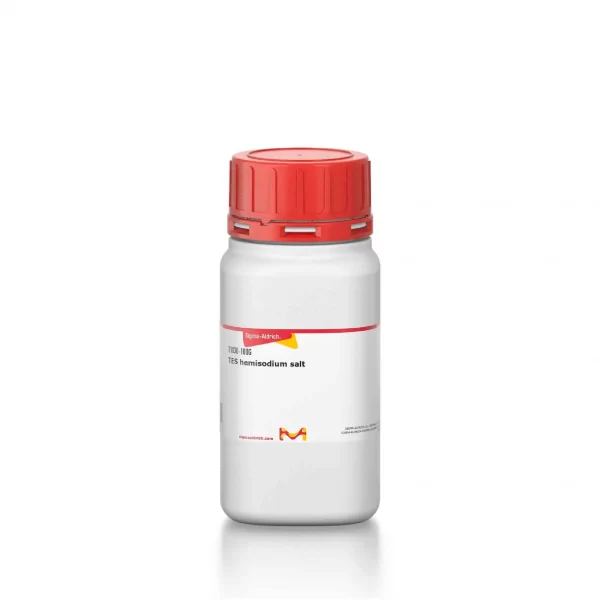
TES Hemisodium Salt, ≥99%
Login to see pricesBrand:
Sigma-Aldrich
Description
Empirical Formula: C6H14.5NO6S · 0.5 Na
Molecular Weight: 240.24
Synonyms: 2-[(2-Hydroxy-1,1-bis[hydroxymethyl]ethyl)amino]ethanesulfonic acid, N-tris(Hydroxymethyl)methyl-2-aminoethanesulfonic acid
Assay: ≥99%
Useful pH range: 6.8 – 8.2
Application: Diagnostic assay manufacturing
Solubility: Water: 0.25 g/mL, clear, colorless
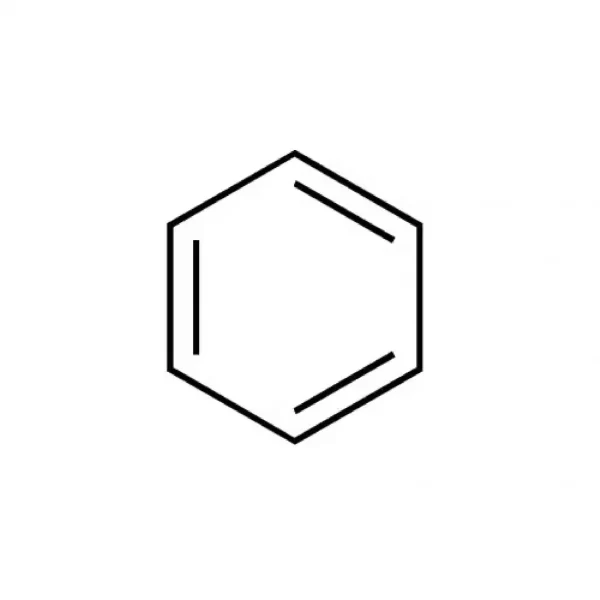
Benzene Anhydrous, 99.8% – Sigma-Aldrich
Login to see pricesBrand:
Sigma-Aldrich
Description
CAS Number: 71-43-2
Empirical Formula: C6H6
Molecular Weight: 78.11
Synonyms: –
Assay: 99.8%
Benzene is a six-membered aromatic compound that can undergo ionization induced by superhalogens, according to ab initio calculations. This compound is a frequently used industrial solvent but is also considered an air pollutant and a powerful carcinogen.
Benzene may be used in the formation of phenyl acetate by aerobic oxidation using Pd catalyst and acetic acid as solvent, formation of phenol by hydroxylation in the presence of mesoporous carbon nitride supported on vanadium catalyst and as a solvent to prepare nanoparticles of gallium nitride (GaN) by reacting Li3N and GaCl3 at 280°C.
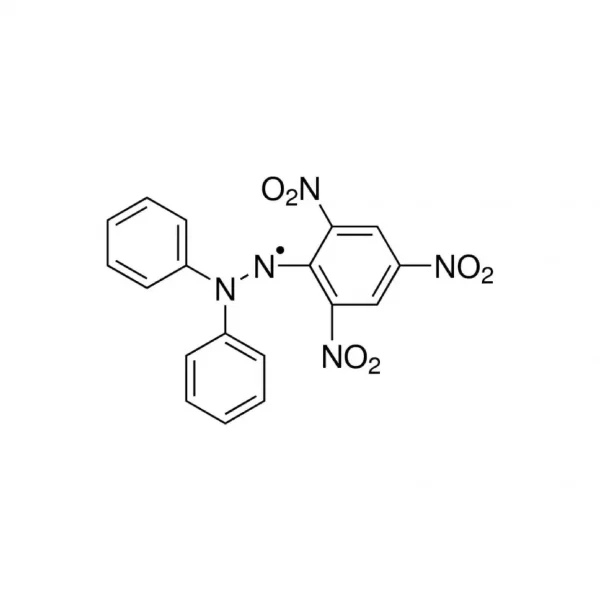
2,2-Diphenyl-1-picrylhydrazyl – Sigma – Aldrich
Login to see pricesBrand:
Sigma-Aldrich
Description
CAS Number: 1898-66-4
Molecular weight : 394.32 g/mol
Empirical formula : C18H12N5O6
Synonyms : 1,1-Diphenyl-2-picrylhydrazyl radical, 2,2-Diphenyl-1-(2,4,6-trinitrophenyl)hydrazyl, DPPH
2,2-diphenyl-1-picrylhydrazyl is a type of free radical that can accept hydrogen from antioxidants, making it a useful tool in the DPPH assay for evaluating the antioxidant activity of various natural samples, including wine, fruits, and herbal tea.
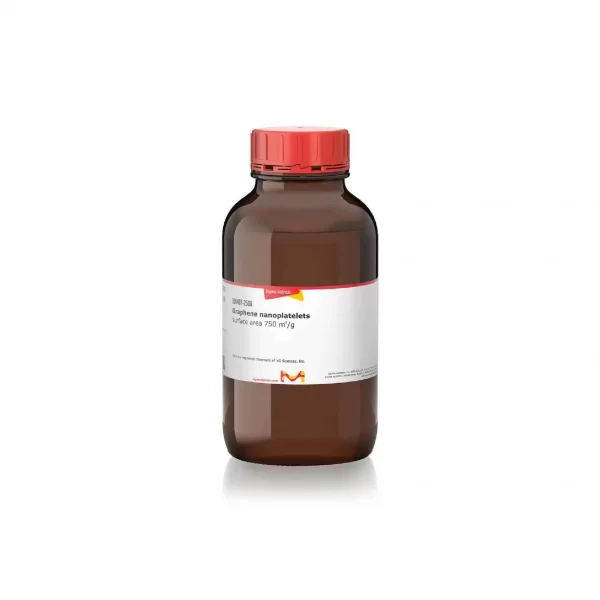
Graphene Nanoplatelets, Sigma – Aldrich
Login to see pricesBrand:
Sigma
Description
CAS number: 7782-42-5
Molecular weight:12.01
Synonyms: GNPs, xGnP® graphene nanoplatelets-grade C-750
xGnP® graphene nanoplatelets are a unique type of nanoparticle that have a platelet shape and are composed of short stacks of graphene sheets. Their distinctive size and morphology make them highly effective at providing barrier properties, as well as excellent electrical and thermal conductors due to their pure graphitic composition. Additionally, incorporating xGnP® graphene nanoplatelets can enhance mechanical properties such as stiffness, strength, and surface hardness of the matrix material.
Applications include:
- Ultracapacitor electrodes.
- Anode materials for lithium-ion batteries.
- Conductive additive for battery electrodes.
- Electrically conductive inks.
- Thermally conductive films and coatings.
- Additive for lightweight composites.
- Films or coatings for EMI shielding.
- Substrate for chemical and biochemical sensors.
- Barrier material for packaging.
- Additive for super-strong concrete.
- Additive for metal-matrix composites.
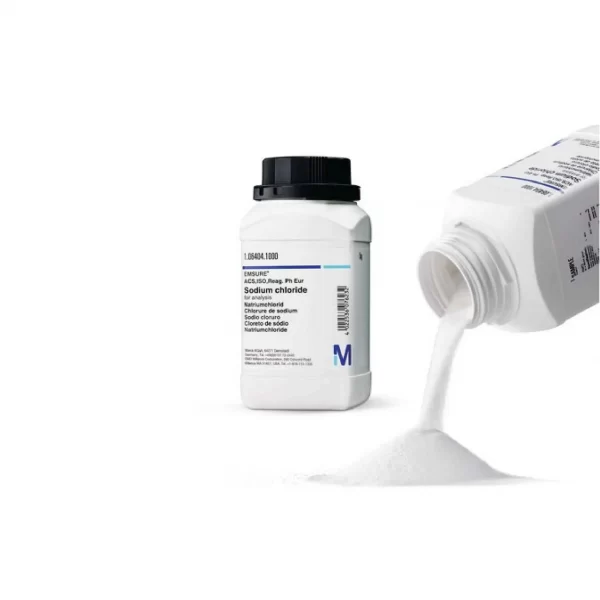
Potassium Nitrate for Analysis EMSURE® ISO,Reag. Ph Eur
Login to see pricesBrand:
Merck
Description
CAS number: 7757-79-1
Chemical Formula: KNO₃
Molar Mass: 101.10 g/mol
Synonyms: Nitric acid potassium salt
Specifications:
| Assay (alkalimetric) | ≥ 99.0 % |
| pH-value (5 %; water) | 5.0 – 7.5 |
| Chloride (Cl) | ≤ 0.001 % |
| Iodate (IO₃) | ≤ 0.0005 % |
| Nitrite (NO₂) | ≤ 0.001 % |
| Phosphate (PO₄) | ≤ 0.0005 % |
| Sulfate (SO₄) | ≤ 0.003 % |
| Heavy metals (as Pb) | ≤ 0.0005 % |
| Ca (Calcium) | ≤ 0.001 % |
| Cu (Copper) | ≤ 0.0001 % |
| Fe (Iron) | ≤ 0.0003 % |
| Mg (Magnesium) | ≤ 0.0015 % |
| Na (Sodium) | ≤ 0.02 % |
| NH₄ (Ammonium) | ≤ 0.001 % |
| Pb (Lead) | ≤ 0.0001 % |
| Corresponds to ISO,Reag. Ph Eur | |
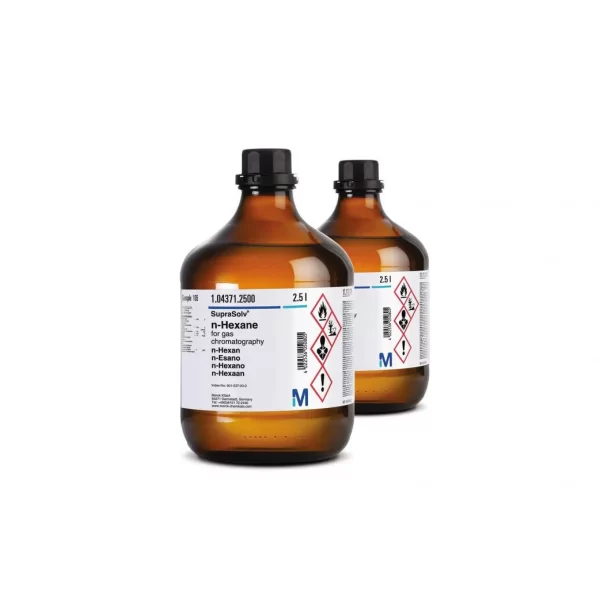
n-Hexane for Gas Chromatography MS SupraSolv®, Merck
Login to see pricesBrand:
Merck
Description
CAS number: 110-54-3
Chemical Formula: CH₃(CH₂)₄CH₃
Molar Mass: 86.18 g/mol
Synonyms: –
SupraSolv® MS is specifically designed for gas chromatography coupled with mass spectrometric detection. SupraSolv® solvents are known for providing the widest specified retention time range, a clear baseline, and a minimal signal-to-noise ratio. This results in highly reliable and reproducible analysis outcomes.



